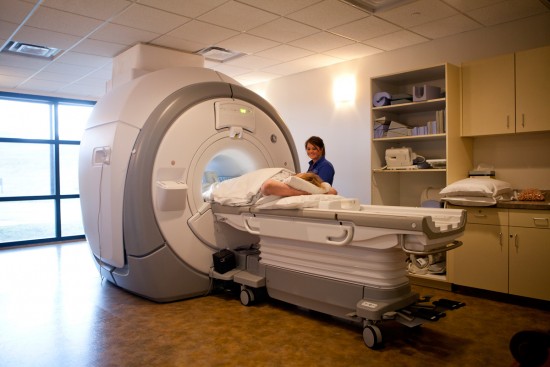MRI
The MRI department at OrthoCincy offers the latest technology and state-of-the-art equipment to provide you with the very best MRI services. We offer MRI services at our Edgewood and Florence locations to provide you with convenience and a caring staff.
What is MRI?
Magnetic resonance imaging (MRI) uses strong magnet and radio waves to provide clear and detailed diagnostic images of internal body organs and tissues. MRI is a valuable tool for diagnosing of a broad range of conditions, including cancer, heart and vascular disease, stroke, and joint and musculoskeletal disorders. MRI allows evaluation of some body structures that may not be as visible with other diagnostic imaging methods.
What is Open/Wide Bore MRI?
Wide bore MRI (often referred to as open MRI) offers all the features of traditional MRI – with more room. A wide bore MRI provides 28 inches of inner diameter space compared to 23 inches on traditional MRI equipment, with up to one foot of headroom. The length has also been reduced from 71 to 49 inches for a more open experience. During the exam, you have the option of keeping your knees raised to relieve lower back pain, or you may lie on your side if necessary.
 Wide bore MRI is ideal for claustrophobic, wheelchair or larger patients because of the increased diameter. The coils are lightweight and made of flexible materials for increased comfort. Multiple exams can be conducted simultaneously (i.e. head and neck), reducing the time in the machine.
Wide bore MRI is ideal for claustrophobic, wheelchair or larger patients because of the increased diameter. The coils are lightweight and made of flexible materials for increased comfort. Multiple exams can be conducted simultaneously (i.e. head and neck), reducing the time in the machine.
How should I prepare for this procedure?
Before your MRI exam, remove all accessories including hair pins, jewelry, eyeglasses, hearing aids, wigs and dentures. During the exam, any metal in these objects may interfere with the magnetic field, affecting the quality of the images taken. Notify your technologist if you have:- any prosthetic joints – hip, knee
- a heart pacemaker, defibrillator or artificial heart valve
- an intrauterine device (IUD)
- any metal plates, pins, screws or surgical staples in your body
- tattoos or permanent make-up
- a bullet or shrapnel in your body or have ever worked with metal
- if you are pregnant or suspect that you may be pregnant
What should I expect during this procedure?
Depending on how many images are needed, the exam generally takes 15 to 45 minutes. However, very detailed studies may take longer. You must lie down on a sliding table and be comfortably positioned. Even though the technologist must leave the room, you will be able to communicate with him or her at any time using an intercom. You will be asked to remain still during the actual imaging process; there may be multiple sequences, which last between 2 and 15 minutes each. Depending on the part of the body being examined, a contrast material may be used to enhance the visibility of certain tissues or blood vessels. A small needle is placed in your arm or hand vein and a saline solution IV drip will run through the intravenous line to prevent clotting. The contrast material is injected about two-thirds of the way through the exam.
What will I experience during this procedure?
MRI is painless. Some claustrophobic patients may experience a “closed in” feeling. If this is a concern, a sedative may be administered. Newer open MRI machines have helped to alleviate this reaction. You will hear loud tapping or thumping sounds during the exam. Earplugs or earphones may be provided to you. You may feel warmth in the area being examined. This is normal. If a contrast injection is needed, there may be some discomfort at the injection site. You may also feel a cool sensation at the site during the injection.




